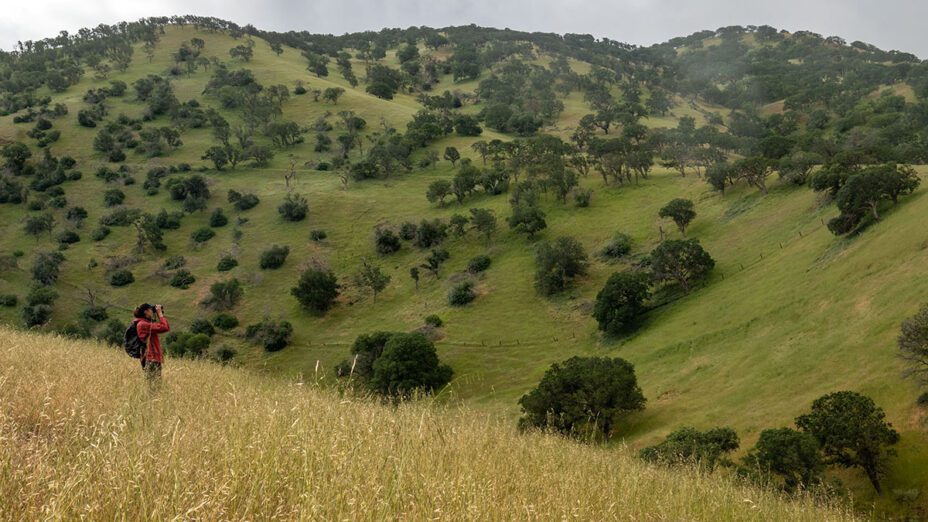
Rare “Fire Follower” Wildflowers
After close to 400,000 acres of the northern Diablo Range was scorched by the catastrophic 2020 SCU Lightning Complex wildfires, we saw an opportunity.
We wanted to research the recovery of these landscapes from fires over the following three years, and we were excited to partner with the California Native Plant Society on a project to document recovery in the footprint of the fires.
In the spring of 2021, we hosted our very first two-week BioBlitz covering the burn zone. It wasn’t long before we started making newsworthy discoveries.
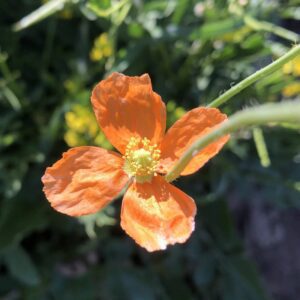
California fire poppy. Photo by Denise Castro
During that first two-week BioBlitz, we discovered the presence of the rare California fire poppy, the first occurrence of this species ever recorded in the Morgan Territory/Round Valley/Los Vaqueros area.
But this wasn’t the last time we would see this enigmatic flower.
Year after year, the vibrant blooms of the California fire poppy continued to pop up and multiply; this year, our stewardship team observed several populations of this wildflower and other fire follower flowers like golden eardrops thriving in the burn zone.
This spring in Del Puerto Canyon, huge swaths of golden eardrops covered the landscape, more than we had seen in any of the previous years.
BioBlitzing throughout the Northern Diablo Range
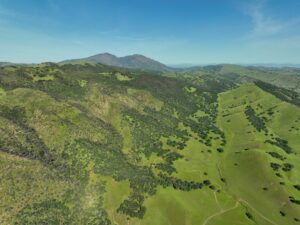
Morgan Territory, which was burned by the fires in 2020, in spring of 2023. Photo by Cooper Ogden
Since we started this three-year series of BioBlitzes, the changes that the burn zone has undergone throughout this regrowth period have been nothing short of jaw-dropping.
As our team trekked through the burn zone, they marveled at the continuous regrowth and resilience of the Diablo Range.
Soon “the chamise curtain will close,” and many areas that are currently accessible in these areas will fully regrow as the chaparral populations recover and take these areas back.
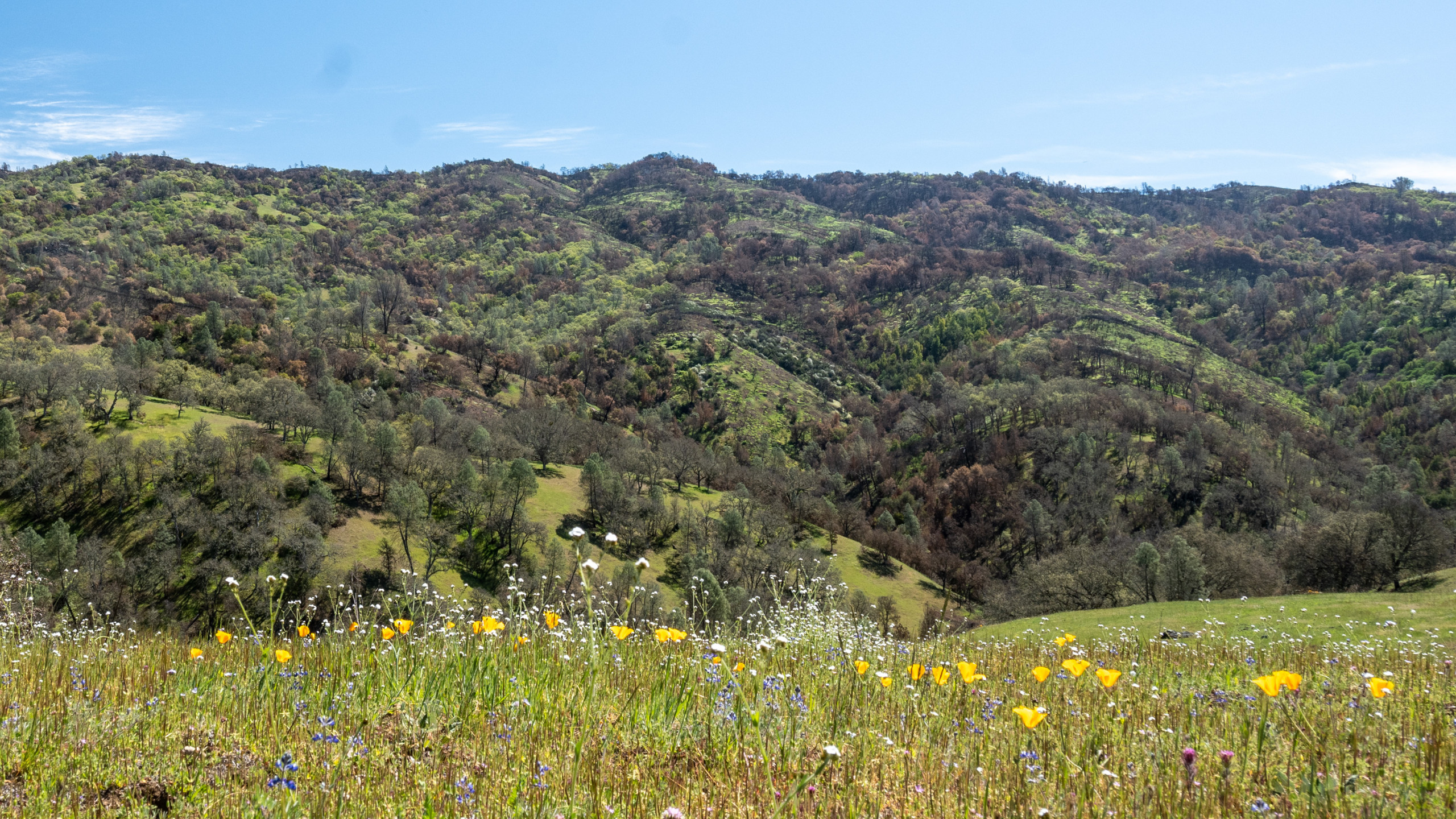
A lush recovery at Henry Coe. Photo by Bruce Hamilton
In 2021 and 2022, we closely observed changes in native plant populations as the lack of shade brought more sunlight to the earth, allowing massive populations of flowers to grow.
Interested in what species we found throughout the burn zone?
Participants in our BioBlitz have uploaded their observations to iNaturalist since the start of the project. Thanks to their work, we’ve gathered a lot of data on the recovery of this area since it burned that we can use to better understand the ecology of the Diablo Range!
Over 700 observers have recorded the presence of more than 1,500 species within the research area.
Rare and Native Wildflowers
Because our BioBlitz takes place in the spring, many of the most frequently recorded species are rare native wildflowers.
Some of the wildflowers we found include
- fairy fans (Clarkia breweri)
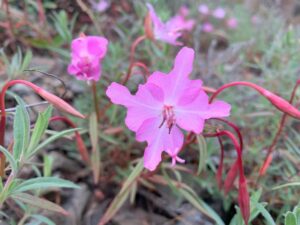
Fairy fans (Clarkia breweri). Photo by Mary Nagle
2. white globe lily (Calochortus albus)
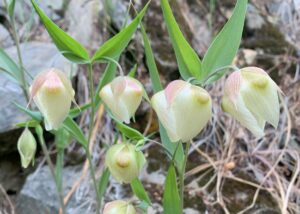
white globe lily (Calochortus albus). Photo by Mary Nagle
3. golden eardrops (Ehrendorferia chrysantha)
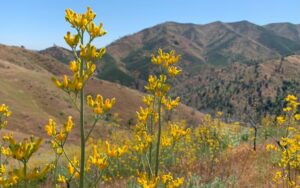
Golden eardrops in Del Puerto (Ehrendorferia chrysantha). Photo by Mary Nagle
4. Lindley’s blazing star (Mentzelia lindleyi)
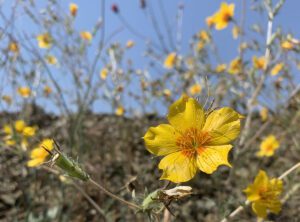
Blazing star. Photo by Haley Sutton
5. yellow mariposa lily (Calochortus luteus)
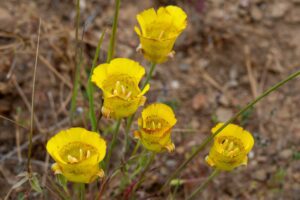
Yellow mariposa lily. Photo by Scott Hein
and many more.
In 2023, some of the wildflowers we found also included unusual colors (such as an albino form) of some species.
24 Hours at Tesla Park: Bobcats, Interesting Birds, and an Abundance of Wildflowers
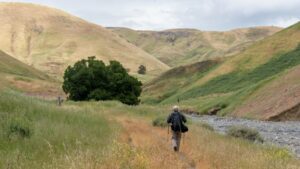
Tesla Park. Photo by Joan Hamilton
For our 24-hour BioBlitz in 2023, we managed to secure access to Tesla Park, an ecologically extraordinary area that we’ve been helping to advocate for the protection of for more than a decade.
Experts from the East Bay Regional Park District, California State Parks, and other organizations joined us for this 24-hour race against time to find as many species as they could.
They searched everywhere, from the top of Tesla Park’s expansive ridges to the depths of the valley along Mitchell Creek and throughout areas that have significant potential to serve as habitat for rare amphibians.
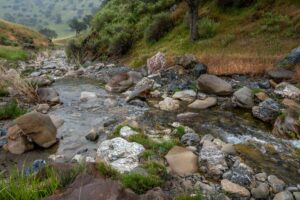
Tesla Park. Photo by Scott Hein
While the grass was yellowing, more wildflowers were blooming. The flowers of Tesla Park are notable not only because many of them are uncommon, but because of their abundance thanks, in part, to the lack of human disturbance.
Along the creek, footprints belonging to wild cats and ungulates (possibly tule elk) were found. According to Save Tesla Park, this area is part of the range of tule elk. A researcher also spotted and photographed a bobcat.
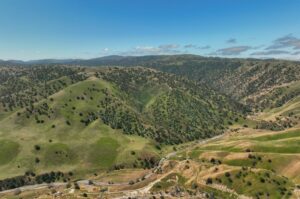
Tesla Park. Photo by Cooper Ogden
Though elks successfully forage and survive in Tesla Park, they avoid Carnegie State Vehicular Recreation Area, which directly neighbors the park, because of the considerable destruction of the habitat from off-road vehicles.
Researchers also spotted lots of interesting birds, such as lazuli bunting and calliope hummingbird.
Participants recorded their observations on iNaturalist; the information will be publicly accessible for researchers and anyone else who wants to know more about our findings at Tesla Park.
Learn More about Our BioBlitz Discoveries
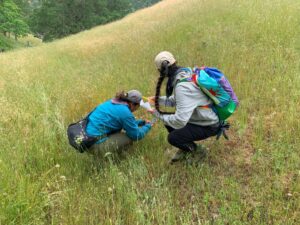
24-hour BioBlitz in Tesla Park. Photo by Mary Nagle
Want to learn more about our findings and the changes in the landscape we’ve observed since we started our three-year survey of the burn zone? Check out our BioBlitz debrief below:
Each year, we host and publish a BioBlitz debrief covering our findings from our BioBlitz in detail.
We are joined by experts who often have decades of experience in their respective fields to cover the fascinating, distinctive, and often rare species that we find throughout the Diablo Range.

